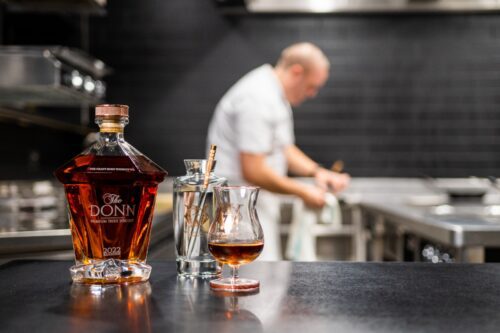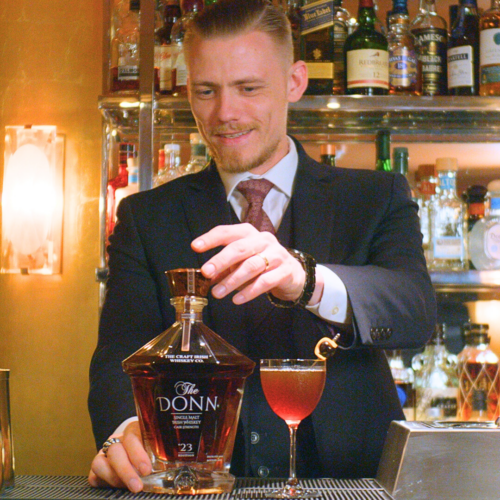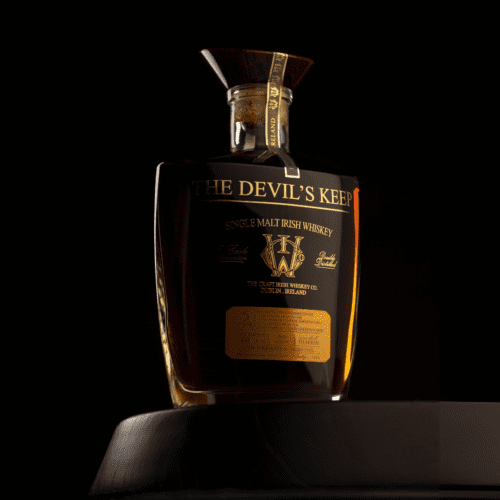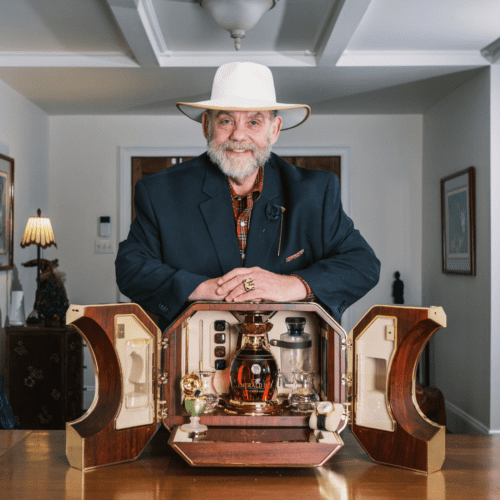There are few things quite so special as a sip of sensational whiskey. The gentle aromas rising to your nose; the caramels, vanillas, and dark fruit clinging to your tongue long after the liquid goes down. But did you know that the way in which you taste your favourite spirit can greatly affect how you perceive those very flavours? Whiskey tasting is something to be carefully considered. We assembled insights from our resident whiskey connoisseur to let you know exactly how to do a whiskey tasting. Below we present you with an in-depth guide on how to taste whiskey.
Whiskey Tasting Basics
Let’s begin by addressing what we mean by “how to taste test whiskey.” It’s important to remember that tasting is not the same thing as drinking. Drinking is a relatively simple operation performed exclusively by the mouth. Tasting, on the other hand, is an elaborate series of observations compiled from all the senses. Before we sip, we are smelling whiskey. And before whiskey smelling we are looking at it—what colours is it giving off in the glass? Usually the darker the colour, the more concentrated the flavour to follow. Though that’s a rule with many exceptions.
The Glassware
But before even looking at the liquid, we must consider the whiskey tasting basics, including what whiskey tasting glasses to use for the exercise. Don’t even think about a traditional wine glass. You want something that allows the stronger alcohol vapours to dissipate, concentrating only the ester-rich aromas of the whiskey towards your nose. The industry standard for Irish Whiskey as well as Scotch has become the Glencairn. But The Craft Irish Whiskey Co. has developed its own glassware, conceived to elevate the entire whiskey tasting experience. If you haven’t already, take a look at the Érimón Glass. It’s the result of more than 18 months worth of scientific research and design formulation.
Smell is responsible for the majority of the whiskey taste we perceive on the palate. But the ethanol vapours from alcohol can stymie the sensation, giving us that “burn” on the nose that numbs us from the more delicate tonalities. The process of removing the ethanol begins with the material of the “glass” itself. The soda-lime used for the Érimón is incredibly efficient at absorbing ethanol. But the structure of the glass will also help with this. A conical shaped depression at the base will create a swirling tornado that spins ethanol molecules down and out to the sides. And a bulbous curvature to the vessel will accentuate the softer nuances, funnelling them upwards to the nose.
How To Smell Whiskey
When you’re ready to smell your whiskey you ought to do so with purpose and precision. Don’t rush the experience. Swirl the liquid in the glass to release some of those lingering aromas. Then bring the glass slowly up to your nose with your mouth slightly agape. Now comes the tricky part: put your nose past the aperture of the glass and breathe through your mouth while doing so. This counterintuitive motion will ensure that you’re not overwhelming your sense of smell with those aforementioned ethanol vapours. The aim here is also to encourage retronasal aromas—those that we perceive near the back of our throat. Studies show that retronasal aroma actually enhances the intensity of taste. Bring the glass back down and swirl the liquid around again before repeating this nosing method several times.
Take a mental inventory of what you’re smelling in the whiskey. What does it remind you of? A seasoned whiskey drinker will be writing down notes here. Close your eyes and draw back from sense memory. It doesn’t have to be other foods or drinks. It can be anything; burnt rubber and scorched earth are frequently associated with peatier scotches. If you’re smelling a well-aged Irish Whiskey perhaps it evokes some sort of experience from childhood…Being on a rainy beach in summertime? There are no wrong answers here. It’s just a matter of figuring out what the aromas conjure in you and seeing how those feelings evolve with the sip that is soon to follow. Which brings us to the main act; how to do whiskey tasting.
How To Taste Whiskey Notes
Now comes the fun part. You’ve set the stage, hopefully you’ve been chronicling the experience thus far, now you’re going to get intimately acquainted with your whiskey. Your first sip should be a very small one. Swish it around to coat the inside of your mouth with the least amount of alcohol possible, before swallowing. The idea here is to prime the pump, so to speak. This isn’t beer or wine, this is a strong distilled spirit upwards of 40% ABV and it needs to be treated gently. Let your palate become accustomed to the strength of the liquid. Give pause, and then get ready to take a more substantial sip. Really sit with this one. Allow the whiskey to wash over different parts of your tongue and consider how it awakens various tastebuds on each respective part. Some experts even prefer to roll it around in the mouth by rotating the entire head in a circular motion! Hold the whiskey there for a beat or two and then finally commence with the swallow. Immediately open your mouth after it goes down to encourage more of that retronasal sensation we described before.
What you’re experiencing here is called, appropriately, the finish. For many whiskey connoisseurs this is the pinnacle of the whiskey tasting experience. In a great Irish Whiskey tasting, for example, the flavours in the back of your throat will evolve elegantly and even radically before slowly fading from perception. Again, try to keep your eyes closed and separate yourself from other external stimuli that can distract you from the whiskey in hand. You’re aiming for quiet contemplation. After a few moments, awaken your mind to the tastes, feelings and experiences that this sip has elicited. Then get ready to repeat the process all over again!
How To Whiskey Taste Like A Connoisseur
Any whiskey expert worth their salt will be taking detailed notes throughout this entire process. If you’re sipping whiskey regularly, which we certainly hope is the case, then it’s easy to forget the different sensations that each one carries with it. Writing things down makes most people more cognisant of what they like and don’t like. Fairly soon the pattern of your own palate should reveal itself to you. So much goes into crafting a great whiskey, you owe it to yourself to put at least a little work into sipping it.
“There are so many different categories or grades of whiskey, from your cheaper blends which lack any complexity and are largely grain based but fine for mixed drinks, to the mass-produced single malts which are great for cocktails and edging closer to the sipping standard,” explains Jay Bradley, founder and CEO of The Craft Irish Whiskey Co. “Crafting a great whiskey takes regular tasting by someone with an appreciation for flavour and a deep understanding of the craft. Only they can decide what that whiskey needs, and crucially, know when to pull it from the barrel.”
Now you’re armed with whiskey tasting tips and not just for Irish Whiskey. The same routine works with Bourbon, Scotch, Tequila, Cognac—you name it. Remember, just follow these basic guidelines: carefully choose the glassware, consider the colour of the liquid, nose it very gently, with mouth open, and sip and savour it with even greater care. And take notes all along the way. There you have it…You’re well on your way to being an expert and enjoying a lifetime of whiskey appreciation!










